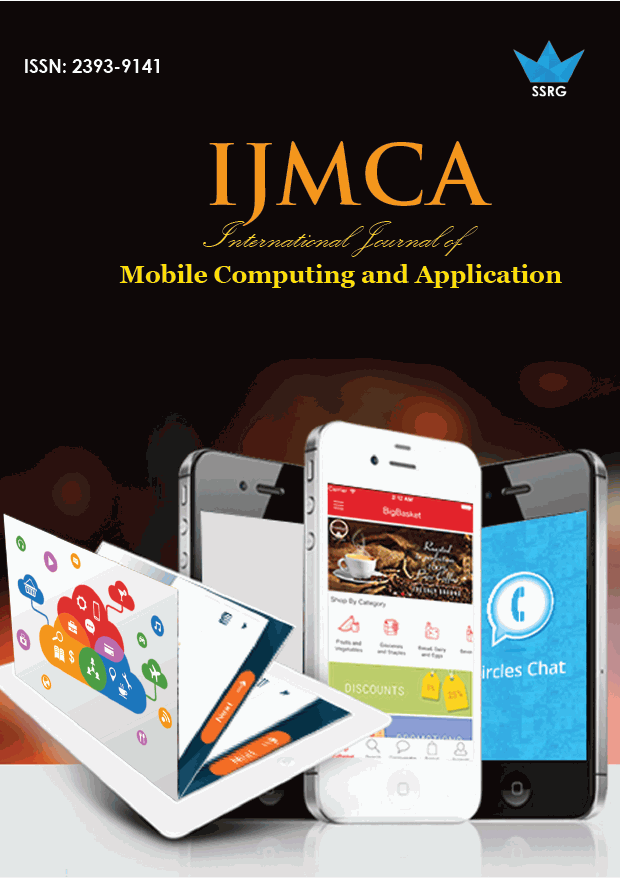Comparable Encryption Procedure Shared with Protected Single Sign-on Instrument for Dispersed Computer Systems

| International Journal of Mobile Computing and Application |
| © 2015 by SSRG - IJMCA Journal |
| Volume 2 Issue 2 |
| Year of Publication : 2015 |
| Authors : Dr.S.Maniraj and C.Sasikala |
How to Cite?
Dr.S.Maniraj and C.Sasikala, "Comparable Encryption Procedure Shared with Protected Single Sign-on Instrument for Dispersed Computer Systems," SSRG International Journal of Mobile Computing and Application, vol. 2, no. 2, pp. 45-48, 2015. Crossref, https://doi.org/10.14445/23939141/IJMCA-V2I4P106
Abstract:
These security-enhanced announcement tools in a wide-area Globus test bed that we are creating, entitled GUSTO (Guidance Utilizing Stable Timing Oscillator). This distribution will permit large scale submission experiments and hereafter provide response on how our sanctuary mechanisms work in concrete situations. It seems confident that encryption presentation will be a bottleneck in numerous situations. Therefore, we will experimentation with various concert enhancement techniques, containing particular protocols, parallel encryption algorithms combined with protected single sign instrument, and use of devoted encryption processors. Additional interesting bearing for further work will be to examine the probability of using the Meta calculating Directory Service to determine when protected communication mechanisms must be engaged, for example since communication happens over insecure network connections. Noticeably one issue that will be significant to statement in this context is the faithfulness of resource database entrances.
Keywords:
GUSTO (Guidance Utilizing Stable Timing Oscillator)
References:
[1] R. Suganya, A.K. Sathiya Bama, Parallel Encryption Technique Combined With Secure Single Sign-On Mechanism for Distributed Computer Networks, IJCSMC, Vol. 2, Issue. 8, August 2013, pg.115 – 119.
[2] M. Nagendra and M. Chandra Sekhar, Performance Improvement of Advanced Encryption Algorithm using Parallel Computation, International Journal of Software Engineering and Its ApplicationsVol.8, No.2(2014), pp.287-296.
[3] Debasis Dasand Abhishek Ray, A Parallel Encryption Algorithm for Block Ciphers Based on Reversible Programmable Cellular Automata, Journal Of Computer Science And Engineering, Volume 1, Issue 1, May 2010.
[4] Z. Wang, C. Li, and Y. Chen, “PSR: Proactive Source Routing in Mobile Ad Hoc Networks,” in Proc. 2011 IEEE Conference on Global Telecommunications (GLOBECOM), Houston, TX USA, December 2011.
[5] I. Leontiadis and C. Mascolo, “GeOpps: Geographical Opportunistic Routing for Vehicular Networks,” in Proc. IEEE International Symposium on a World of Wireless Mobile and Multimedia Networks(WoWMoM), Helsinki, Finland, June 2007, pp. 1–6.
[6] S. Chachulski, M. Jennings, S. Katti, and D. Katabi, “Trading Structure for Randomness in Wireless Opportunistic Routing,” in Proc. ACM Conference of the Special Interest Group on Data Communication (SIGCOMM), Kyoto, Japan, August 2007, pp. 169–180.
[7] R. Rajaraman, “Topology Control and Routing in Ad hoc Networks: ASurvey,” SIGACT News, vol. 33, pp. 60–73, June 2002.
[8] S. Biswas and R. Morris, “ExOR: Opportunistic Multi-Hop Routing for Wireless Networks,” in Proc. ACM Conference of the Special Interest Group on Data Communication (SIGCOMM), Philadelphia, PA, USA, August 2005, pp. 133–144.

 10.14445/23939141/IJMCA-V2I4P106
10.14445/23939141/IJMCA-V2I4P106